Bruce Betts • Dec 14, 2015
Planetary Deep Drill Field Test: Road Trip
Nothing says holiday season like a 4 meter wire-line drill digging its way into tens of meters of rock in a gypsum quarry. So, several of us from The Planetary Society took a road trip to a gypsum mine in southeastern California near the Salton Sea. For several weeks in November and December 2015, the quarry has been home to the first field test of the Honeybee Robotics Planetary Deep Drill, sponsored in part by The Planetary Society.
The Planetary Deep Drill (PDD) is a prototype of a robotic drill to drill hundreds of meters into icy planetary surfaces like the Martian polar caps, Europa, or Enceladus. This would be a revolutionary technique in planetary exploration, allowing the sampling of materials not altered or destroyed by surface processes, as well as looking back in time by digging into strata laid down in the past.
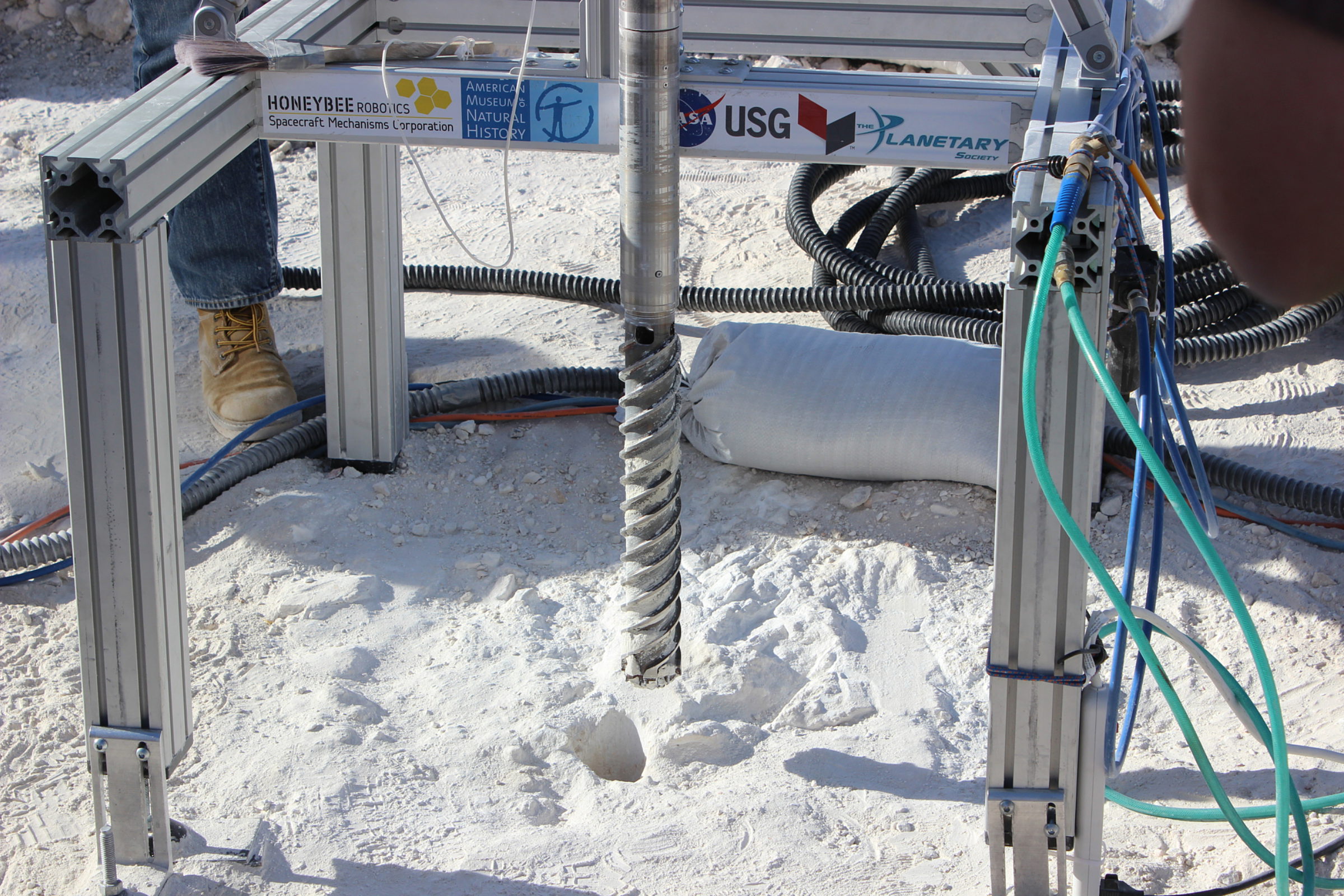
Why gypsum? Because it has strength properties similar to water ice at cold planetary temperatures, and is a lot easier and cheaper to mount a first field expedition to than an ice sheet. US Gypsum made their quarry available for the tests. After a safety briefing from US Gypsum personnel, we were off to the drill site, carefully avoiding the giant trucks hauling gypsum.
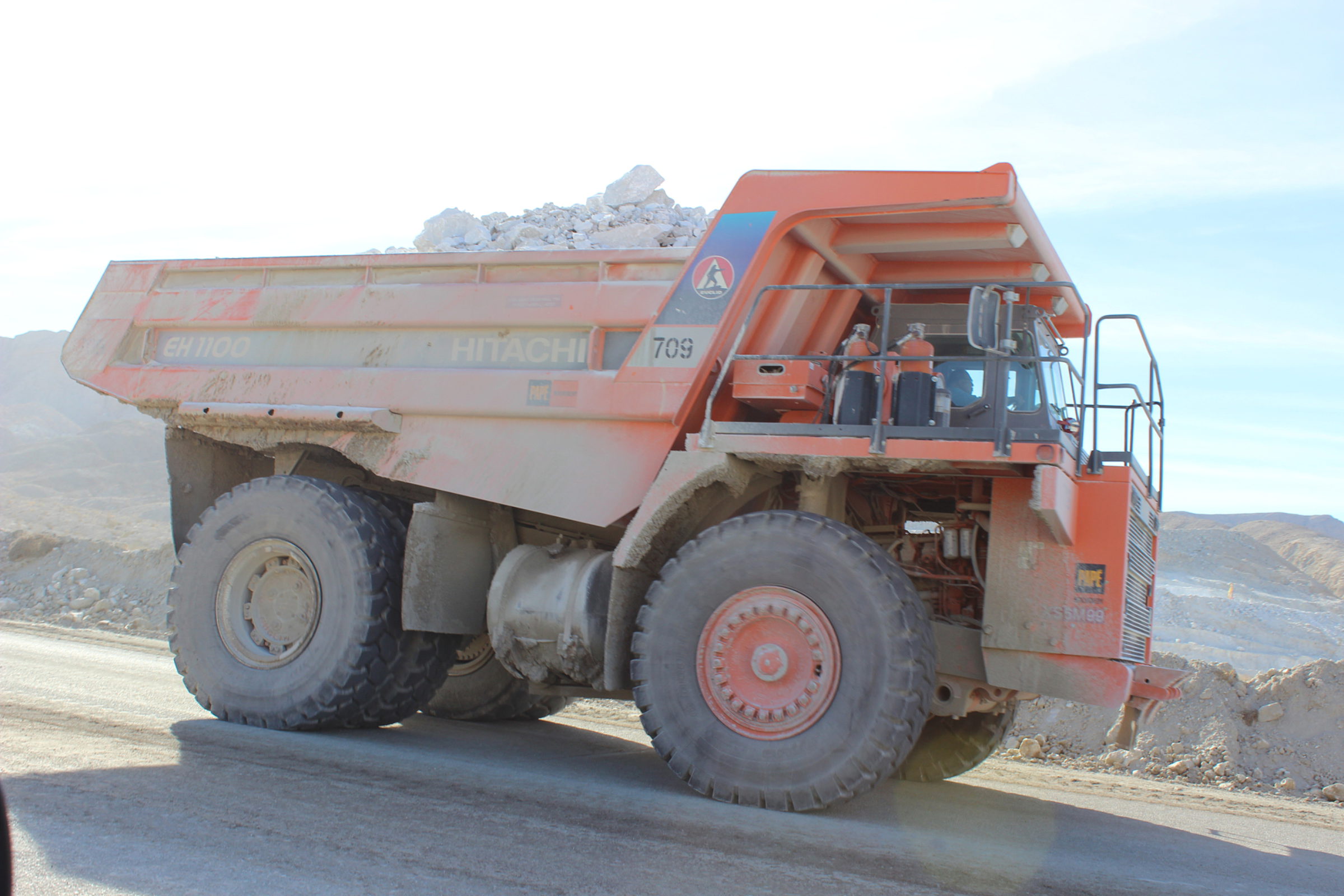
As we approached, we saw the PDD drilling next to a U-Haul truck which serves as the headquarters and control center for the several week field test. The 4 meter drill is lowered on a wire-line and also has an umbilical with power and data cables. This first field test is basically a full test of the automated below ground drilling, the real innovative aspect of this system. Everything above ground is human assisted in the test. In a future planetary deep drill, above ground operations will also be automated.
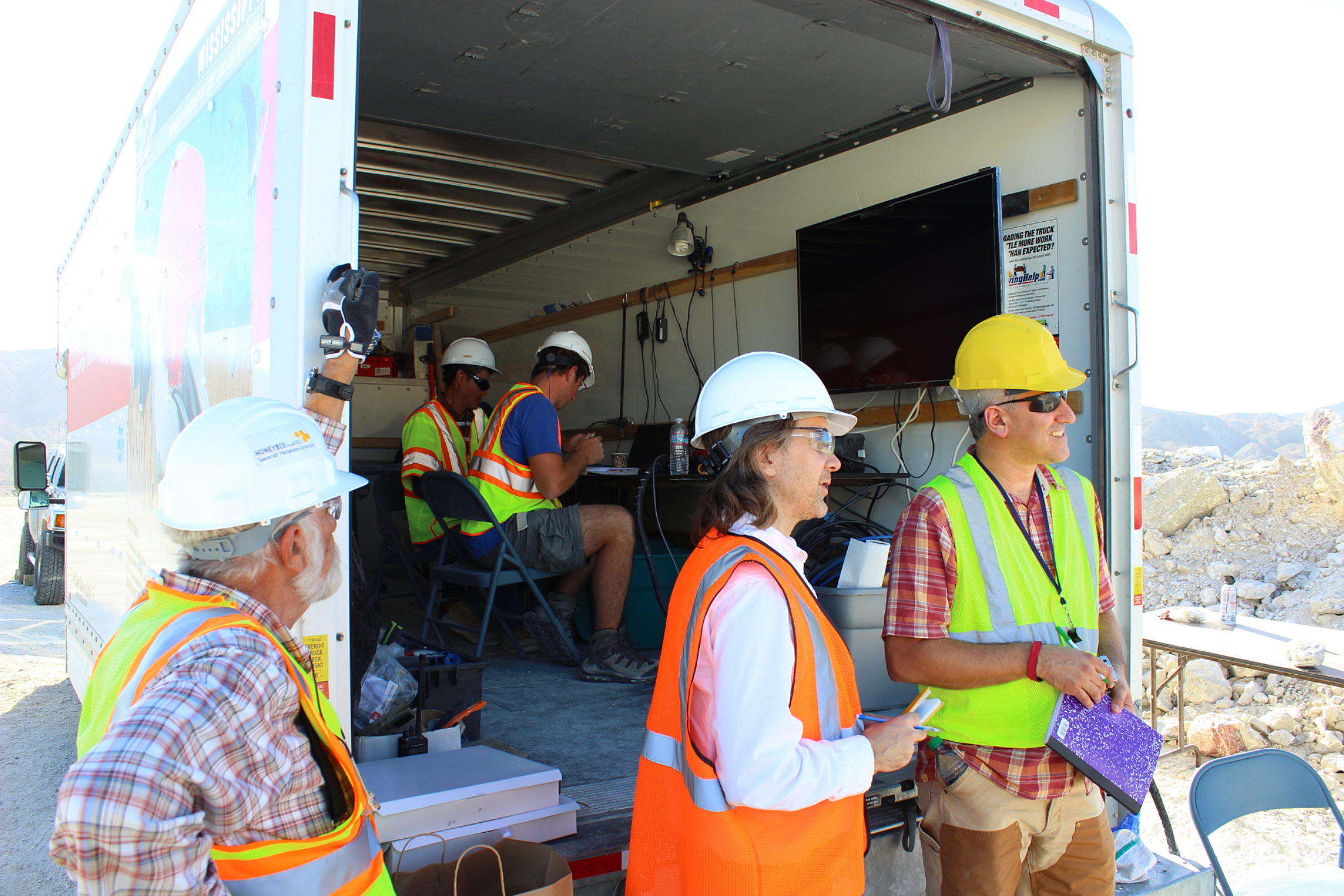
When we arrived the drill was down to more than 13 meters (more than 42 feet) depth. Though it was drilling, it is so deep that one does not actually hear the drilling sounds. It drills 10 to 20 centimeters over the course of tens of minutes, then the human crew reels it up from the hole, cleans out the cuttings, then lowers it again. This gets repeated over and over.

The drill includes many sensors, including a visible wavelength camera and a UV light to look for fluorescence. The drill also deploys pads to hold it in the borehole as it drills. These pads not only hold the drilling mechanism in place, but also makes for a system which is not very dependent on the surface gravity of a planetary body. There are also numerous sensors feeding back information about everything from temperature to electric current.
With support from the American Museum of Natural History, the PDD was designed and built by Honeybee Robotics, a company with lots of experience in building sampling hardware for planetary spacecraft, including hardware on several recent Mars landers and rovers. The Planetary Society is sponsoring this first test of the PDD outside the lab.
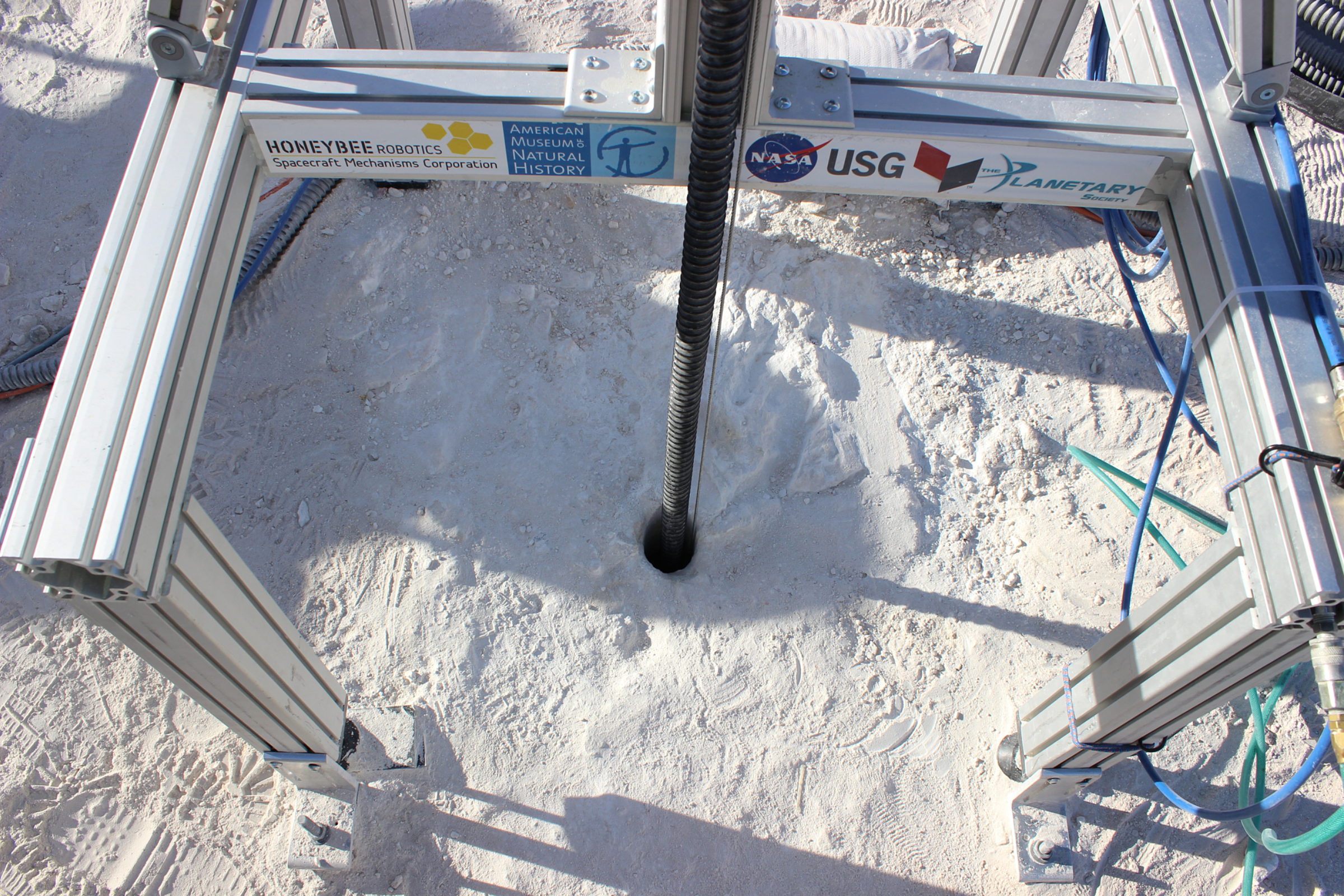
The tests are going well, and Honeybee is learning things to implement in future versions. And now, thanks to a NASA grant, there will be future Earth versions that will include an advanced JPL science instrument: a modified-to-fit-in-a-drill version of the SHERLOC UV Raman and fluorescence spectrometer – a mineralogy instrument that will fly on the Mars 2020 rover. JPL scientists were out at the site the same day learning more about the drill. So, we all can look forward to more field tests, probably next year in gypsum, followed by more exotic tests in a Greenland ice sheet sometime in 2017. Meanwhile, the first field test should be wrapping up soon, and we’ll evaluate what was learned going forward.
While out there, Merc Boyan and I shot several Random Space Fact videos at the quarry and on our way back. They will come in future weeks. Mat Kaplan recorded a Planetary Radio episode about Planetary Deep Drill that will be posted December 15, and Andrew Pauly collected images and information he is sharing on The Planetary Society’s social media channels. It was a fun and informative trip, thanks to our Honeybee Robotics and US Gypsum hosts, and particularly to Honeybee’s Vice President and Director of Exploration Technology, Kris Zacny. Planetary Deep Drill, just an idea not long ago, is deep drilling into a planetary surface now, and that put all of us in the holiday spirit.
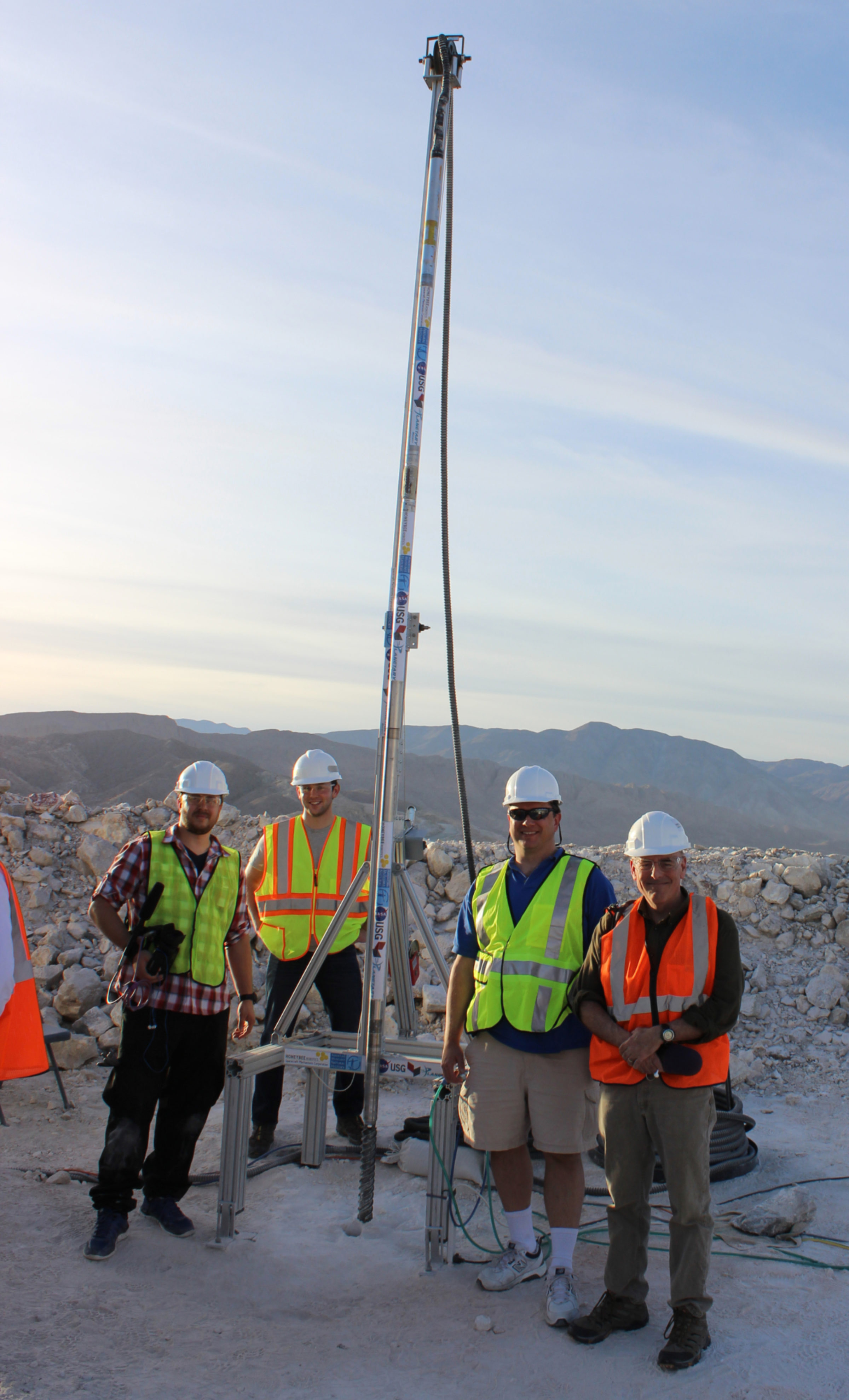
Support our technology development projects:
Support our core enterprises
Your support powers our mission to explore worlds, find life, and defend Earth. You make all the difference when you make a gift. Give today!
Donate

 Explore Worlds
Explore Worlds Find Life
Find Life Defend Earth
Defend Earth

